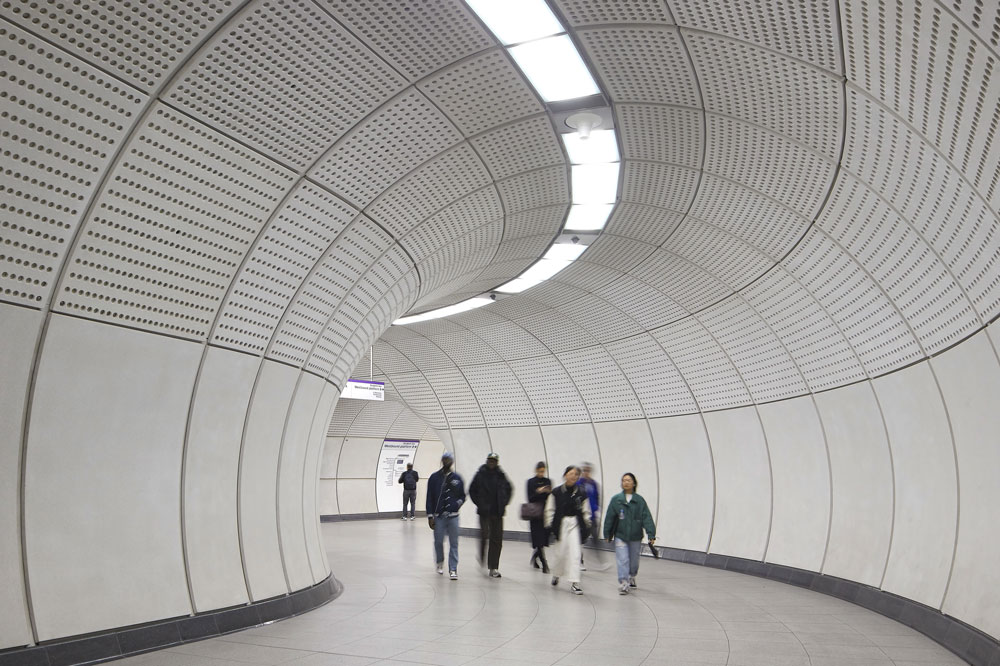In the world of arts and culture, what exactly is the point of an award? Anyone looking for a new artist to admire, new music to listen to or a new book to read has an endless supply of recommendations, generated by algorithms and influencers as well as gleaned from traditional media. And every award shortlist becomes potential fodder for a mini culture war that threatens to eclipse the artistry that is supposedly being celebrated.
So it’s no surprise that awards schemes are struggling for airtime and relevance. Shortlists – from the Turner Prize to the Mercury Prize – have come to seem less confident in recent years, cautiously covering bases and avoiding potential pitfalls rather than revelling in the audacity of what human brains can dream up. The Stirling Prize, awarded annually by the Royal Institute of British Architects and supposedly the top of the tree for British architects, is no exception. This year’s shortlist included a new Tube line, a whole city quarter that has taken 20 years to complete, the retrofit of a brutalist icon of social housing and the externally invisible reworking of a 19th-century art gallery. Also up for the top prize were a small terrace of new social-rent homes on a London mews and a lovely farmyard conversion in Dorset, designed to an exemplary standard of accessibility for wheelchair users and people with other disabilities.
Phase 2 of the renovation of the Park Hill estate, Sheffield. Photo: Tim Crocker
The shortlist seems to be aimed squarely at policy-makers and clients, offering case studies that can be copied and a rebuke to the shoddy quality of most new building in the UK. It is, indeed, imperative that we have well-designed, well-built public infrastructure, social housing and urban regeneration at scale. We should opt for retrofit over demolition, and design accessibly for everyone, no matter their needs. The Grenfell Tower Inquiry laid bare what many architects have known for years: that there is a side to the industry that is frighteningly careless and corrupt. One of this year’s Stirling nominees, phase two of the renovation of the Park Hill estate in Sheffield, is a vital reminder that there is another way – that it is possible to upgrade our 1960s and ’70s housing without turning it into a death trap. But the decision-makers aren’t listening. Mention the Stirling Prize to a minister, or even a planning officer, and watch them look politely baffled.
In any case, the prize, because of its very arbitrariness – what a silly idea that one building can objectively be the best! – should be more than a Kitemark of competence and rationality. The shortlist should be characterised by originality, shock, delight and boldness; by brave, perhaps even difficult architecture that can cut through the endless stream of perfectly refined and decorous designs and define its era. Architects are still capable of creating this – witness the ‘High Tech’/medieval fusion of Niall McLaughlin’s tower in Bishop Auckland, the glossy ceramic carapace of Feilden Fowles’s dining hall in Cambridge or the extraordinary neoclassical dome and blind arcade of James Gorst’s temple complex (yes, really) in the South Downs.
The eventual winner of this year’s Stirling Prize – the Elizabeth Line – is the most photogenic entry in the shortlist, with its curving concrete forms. It may be visionary in comparison to the baseline of our public infrastructure, which is at an all-time low, but most of all it is a triumph of efficiency, rationality and engineering (as even the citation notes). Its architecture has no visibility on the street – the ‘project’ for which the award was given comprised the tunnels and concourses, not the ground-level stations themselves. If architecture is a kind of history physically imprinted on our environment – if it gives the contemporary moment tangible form, speaking to future generations about our current priorities – our stylistic anxiety could not be better summed up. We are confident enough to put extraordinary engineering and digitally optimised architecture below ground, but we are not brave enough to build, let alone celebrate, something so bold amid the cityscape.

The Elizabeth line station at Bond Street. Photo: Hufton + Crow Photography
James Stirling, after whom the award is named, challenged what architecture could be: whether it could be a glass ziggurat or a castle; whether it could have green windows or columns like upside-down toilet plungers. The award could have been named after many other rule-breakers of British architecture: what about Hawksmoor’s weird churches, piling tier upon tier like children’s building blocks, now so comfortable in their setting but so bold at the time? Or Gilbert Scott’s temple-like power stations, or the manic chessboard of Lutyens’ Page Street housing – each hardly muted or ‘in keeping’ with their surroundings, but now treasured landmarks.
Perhaps the name is immaterial. We need the thoughtful, well-made competence of the nominated projects to be the standard for buildings everywhere. But equally, we need awards to celebrate the brave and unexpected – because the buildings that break the mould today will be the prized heritage of the future.
